Disclosure: Please note that some links are affiliate links, and at no additional cost to you, we earn a commission if you make a purchase.
If you would like to support this website in some way, using these links will help do exactly that.
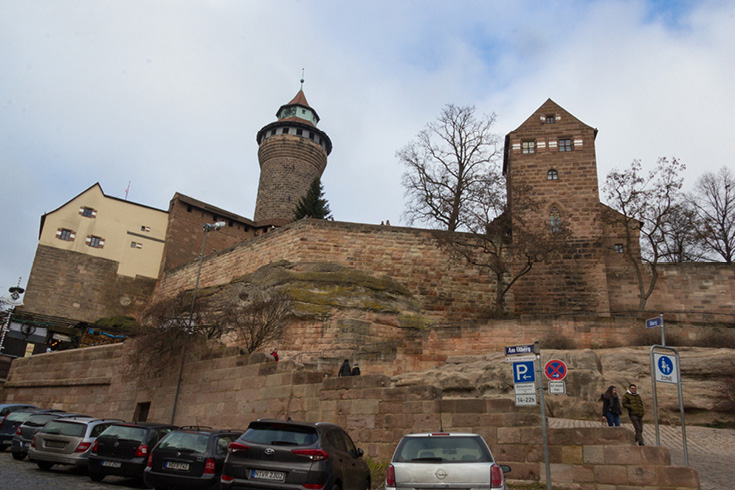
Although the sun was shining brightly, it was bitterly cold as we walked up the steady incline towards the Imperial Castle of Nuremberg. When we reached the base of the castle, a parking lot stood just before it, posing an odd juxtaposition of modern and medieval. We were early, the castle hadn’t opened yet, but there were still school groups already posing for group photos in the frost bitten castle gardens. I admired their youthful daring as they leapt onto craggy rocks for selfies. I was timidly walking on the inclined cobblestones, wondering where the handrail was.
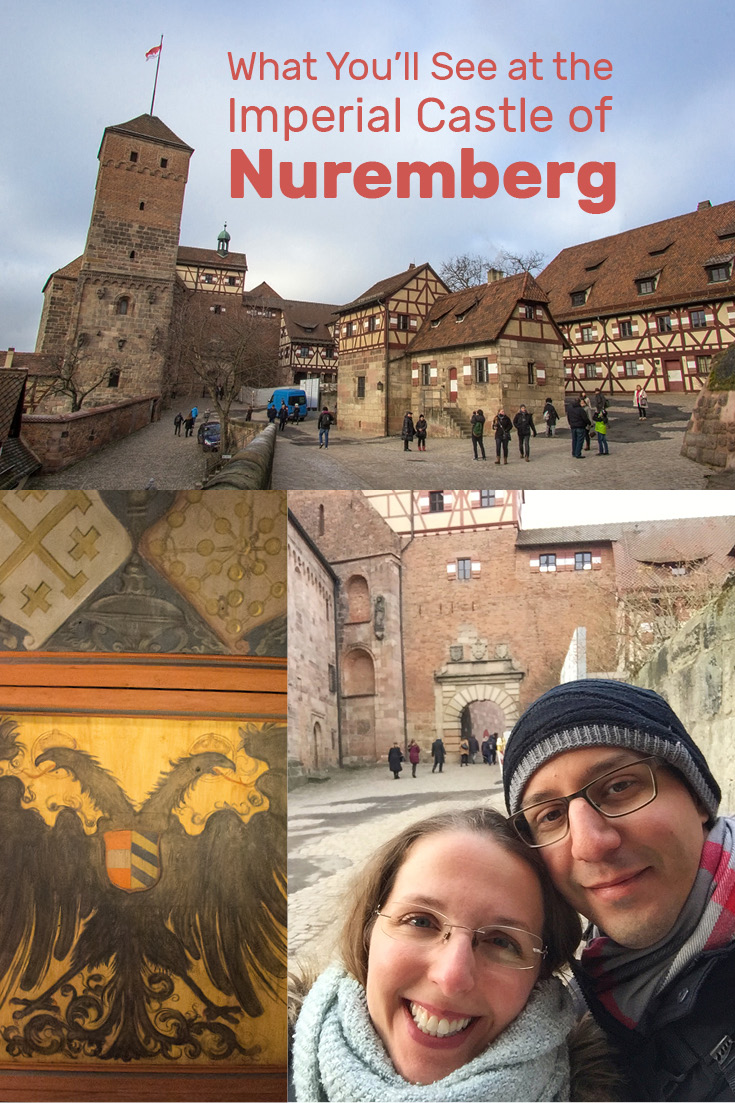
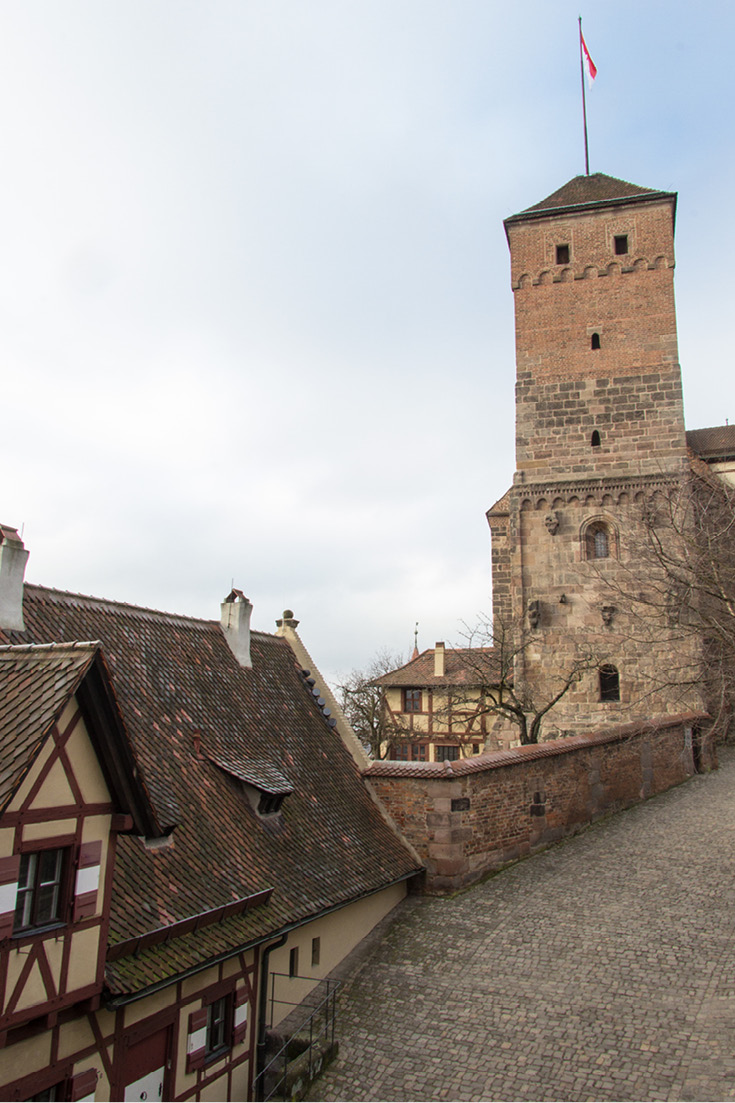
Inner Courtyard & Kunigunden Lime Tree
Sebastian and I were hoping that perhaps the ticket area had a heated waiting area, and ventured in towards the castle’s inner courtyard. After all these years, Germany’s castles still make my jaw drop. I was torn between wanting to take pictures while there were few tourists in the viewfinder, and wanting to find heat. We found the inner courtyard and saw several other like minded couples sitting on frozen benches looking at the Kunigunden lime tree 3.0. The original tree was replaced in 1934, but that planting did not have enough space for the roots between the rocks, and the current tree was planted a few years ago.
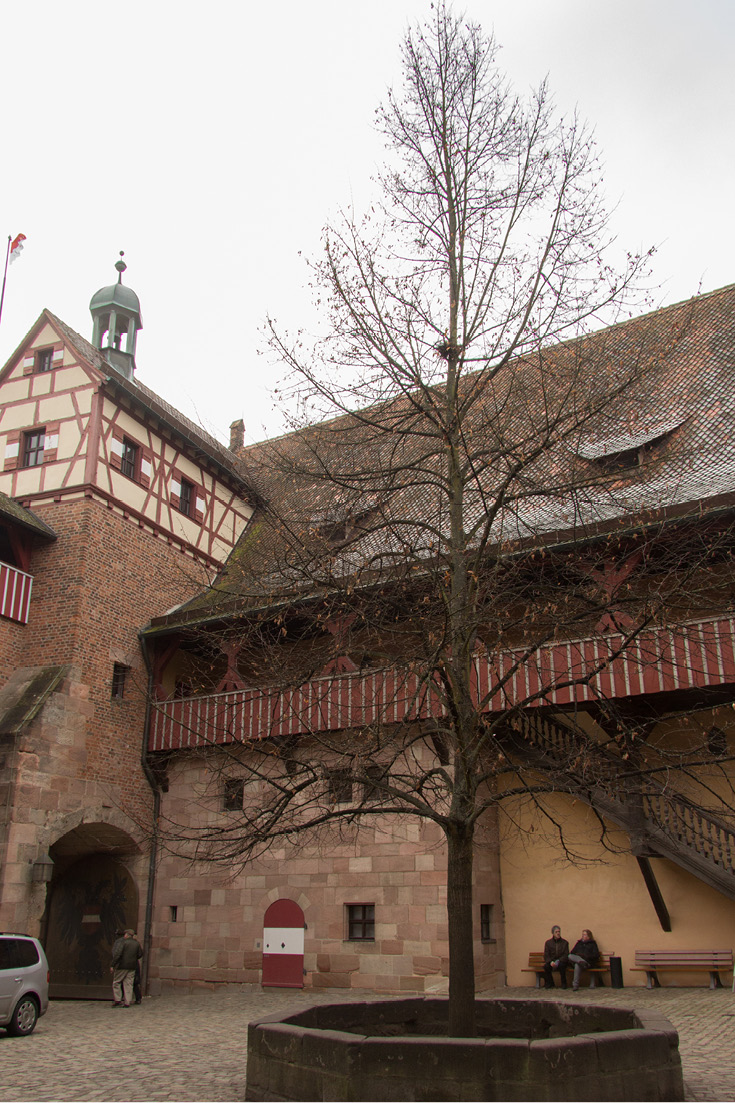
The Legend of the Kunigunden Lime Tree
“The Empress Kunigunde planted it, says the legend, some seven hundred years ago. For once, when King Henry was a-hunting, he came in the pursuit of a deer to the edge of a steep precipice, and this in the heat of the chase he did not perceive, but would have fallen headlong had not a lime-branch, at which he grasped in his extremity, stopped and saved him. And he, recognising the special protection of the Most High, broke off a twig of the lime-tree in remembrance of his wonderful preservation, and brought it to his anxious wife, who planted it at once with her own hands in the earth, and it soon grew into a beautiful tree.” Excerpt From: Cecil Headlam’s “The Story of Nuremberg,” published in 1901 and available for free as part of The Gutenberg Project, click here.
Always punctual, an elderly German gentleman walks slowly with keys jingling in hand towards the ticket office. Our cold colleagues started to gather behind him. We bought our tickets, and went back out to the inner courtyard to enter through the Knight’s Hall. It was an expansive stone room devoid of furniture. On the wall with the windows overlooking Nuremberg, there was a moving illustrated border wallpaper of the imperial processional. I looked around and wondered how we would get into the next exhibit, as the only door in the hall was so impressive and authentic looking there was no way it was intended for our use. It receded into the wall with a pointed arch, and being at the top of a few steps it seemed so tiny. All around the door frame was a gothic mural of Emperors on either side, and Christ on the cross over the top of the arch. When someone else reached for the door handle, I still hung back, suspicious an alarm would sound. Instead, only an obnoxious squeak from the hinges and a smiling attendant greeted them from the other side of the door.
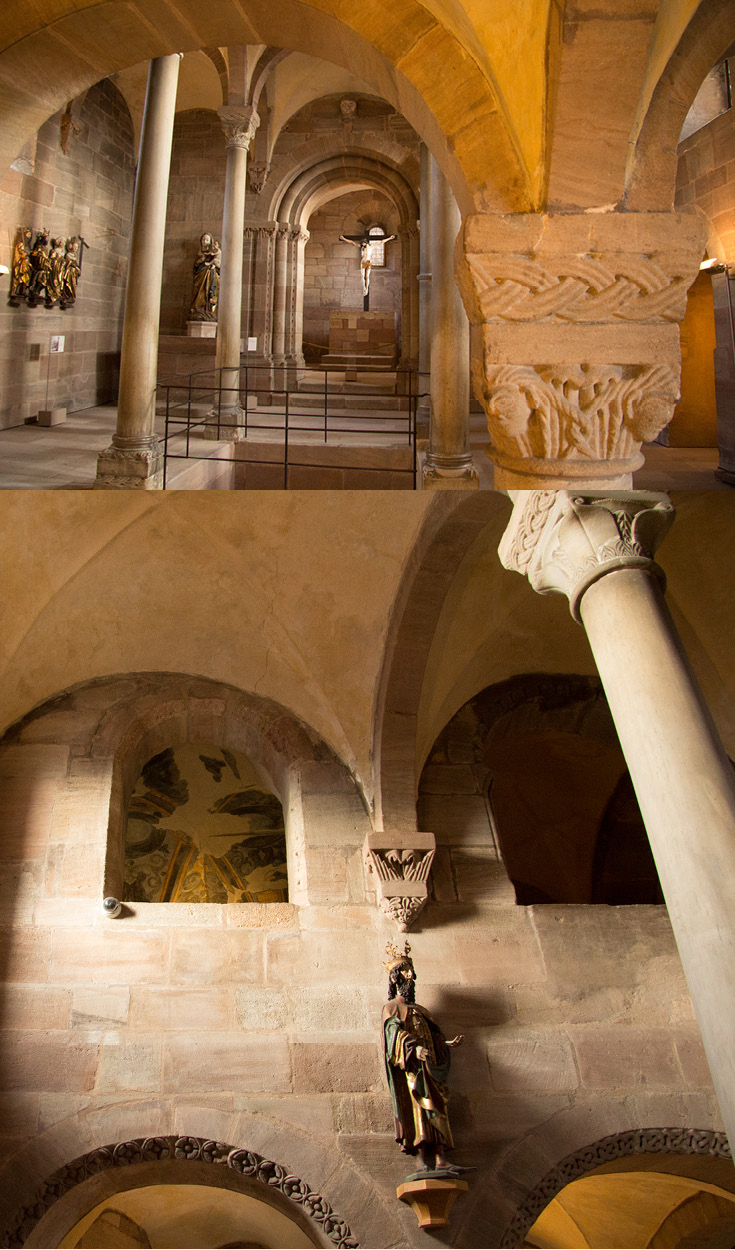
Double Chapel
The door opened to the double chapel, the lower level. It's in the Romanesque style and survived the bombings of WWII for the most part. Graceful, simple columns connect the two levels, the lower for the court, and the upper for the Emperor. You can even peek down below your feet into St. Margaret’s Chapel. It wasn’t accessible to tour. In the back corner we found a stone staircase to continue up to the Emperor's level of the Chapel.
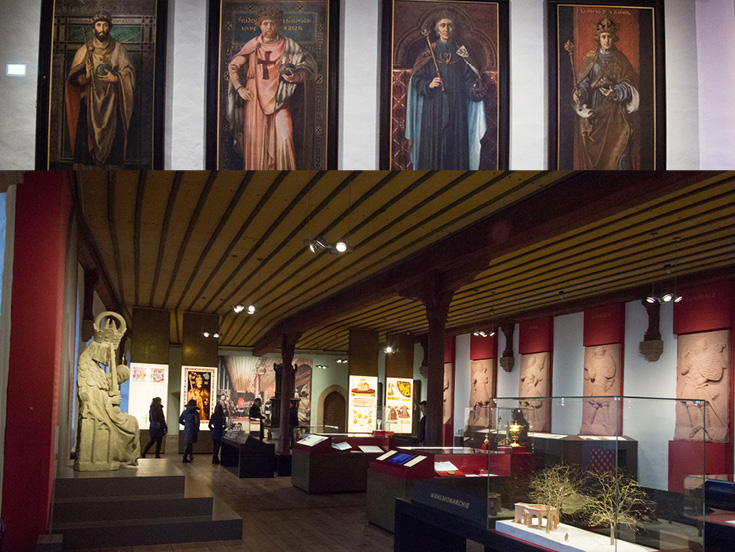
Imperial Hall and Apartment
The next room was by far my favorite. They allocated the space that was the original dining hall for the Emperor and lengthened it an additional third and created a wonderful and modern interactive exhibit space that explains how the Emperors were elected in the Holy Roman Empire. It always seemed a contradiction to me that Emperors were elected, and not inherited. The German lands are unique compared to the United Kingdom and France in this aspect. This exhibit really brought the distinction to clarity to me. Do you understand how Emperors were elected? Let us know in the comments. We may do a post about the process in the future.
Imperial Castle Museum, a branch of the Germanisches Nationalmuseum
After going through a few more smaller rooms of the Imperial Apartment, we stepped into the Bowery. Here was endless artifacts from history, coins, toys, weapons, armor, shields (with deflection marks!), a throne chair, and more.
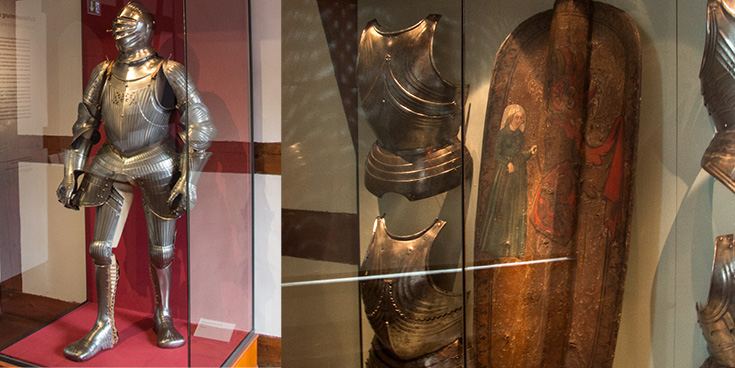
Sinwell Tower & Deep Well
If you’re not opposed to steps or heights, definitely climb Sinwell Tower. The view of Nuremberg is fantastic, and they have black and white photos of how the city looked after WWII for comparison.
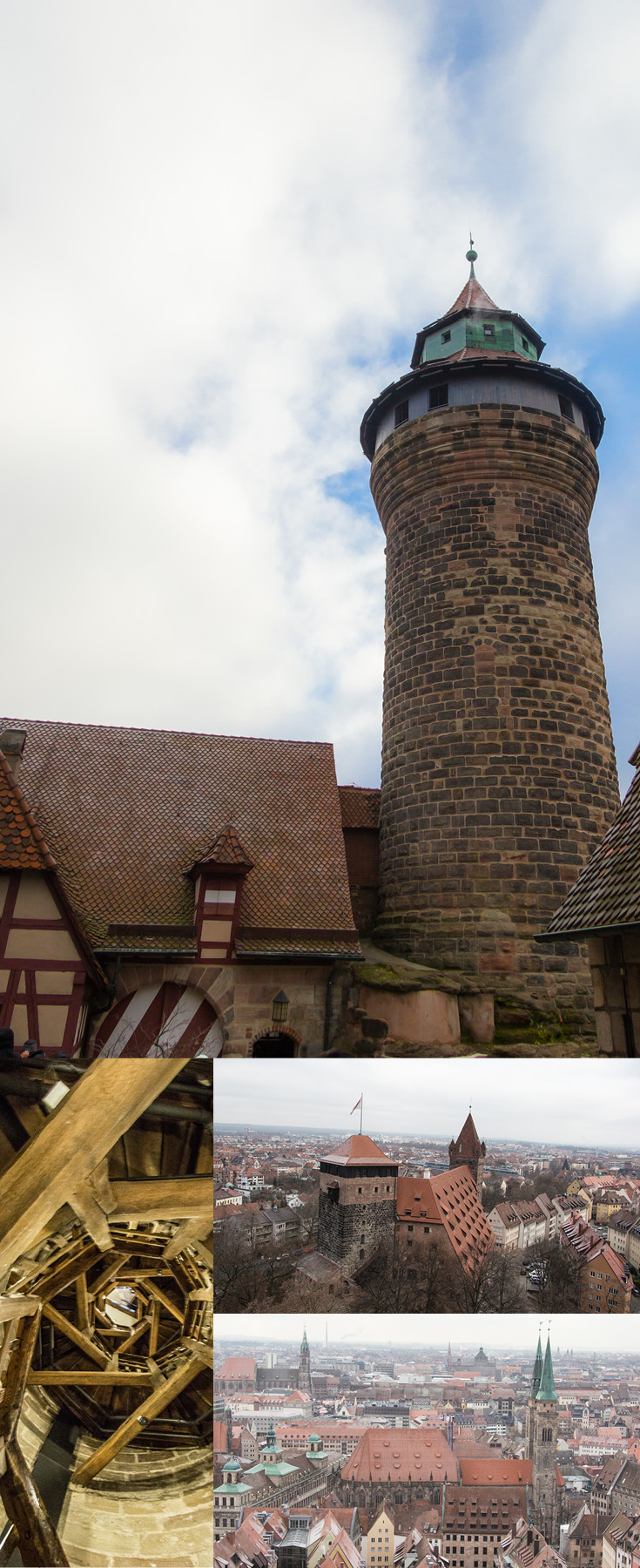
For the Deep Well, you visit with a guide at assigned times, and yes it is more than a really deep hole in the ground. The guide pours water down the well so you can hear how long it takes for the water to splash. Then the guide lowers a candle all the way to the bottom with a video camera all while sharing the history of the well. It was really interesting and definitely worth the time.
Planning Your Trip to the Imperial Castle of Nuremberg
To do everything, tickets are 7 Euros. You can choose your own adventure and visit for less. Walking through the courtyards and gardens is free. Audio guides are an additional 2 Euros. Prices subject to change. Be sure to check the website for the most up to date prices and hours.
Imperial Castle of Nuremberg Admission Prices
Imperial Castle of Nuremberg Opening Hours
Printable English Brochure
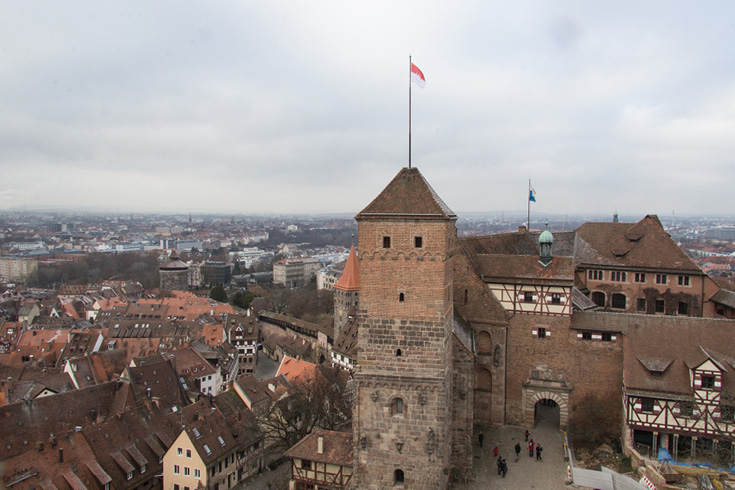
Follow Along
If you enjoyed this article, or these topics sound interesting to you, you'll love our weekly newsletter. You'll receive a free Germany Packing list for signing up, and you'll receive each week's newest posts every Friday. Thank you for reading!

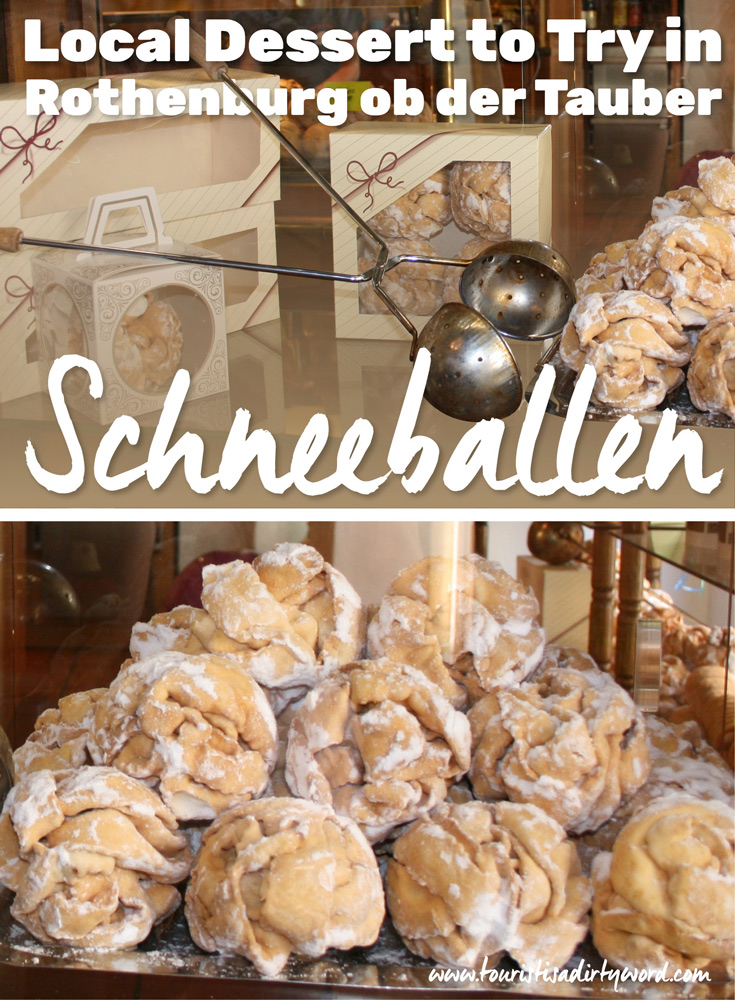
No trip to Rothenburg ob der Tauber is complete without a Schneeballen. This dessert is slightly bigger than a baseball and traditionally covered with confectioner's sugar. If you put enough sugar on, it looks like a snowball - hence the name Schneeballen. Tastes much better than a snowball though.. The Schneeballen have been tempting die-hard sugar fans for over 300 years in several parts of Bavaria. The origin story of the Schneeballen is unknown, but we do know they were originally baked for special occasions only, such as weddings or baptisms. Today you can buy Schneeballen all year round, many of them pre-packaged in gift boxes in Rothenburg, ready for you to share them with your loved ones. While Schneeballen are best eaten fresh, we were told that they have a shelf-life of about 8 weeks at room temperature.
How to Make a Schneeballen
The Schneeballen gets its wavy-ball-like shape from strips of shortcrust pastry that is alternately folded over a stick. Next, a quick 4-minute dunk in the fryer, then cover with a topping of your choice, not limited to confectioner's sugar. We spotted them dusted in cinnamon, chocolate or coconut flakes, and even filled with lemon or hazelnut cream at different stores all over Rothenburg. For those of you who would like to create a Schneeballen at home, here is a recipe, courtesy of Bavaria Tourismus.
Follow Along
If you enjoyed this article, or these topics sound interesting to you, you'll love our weekly newsletter. You'll receive a free Germany Packing list for signing up, and you'll receive each week's newest posts every Friday. Thank you for reading!

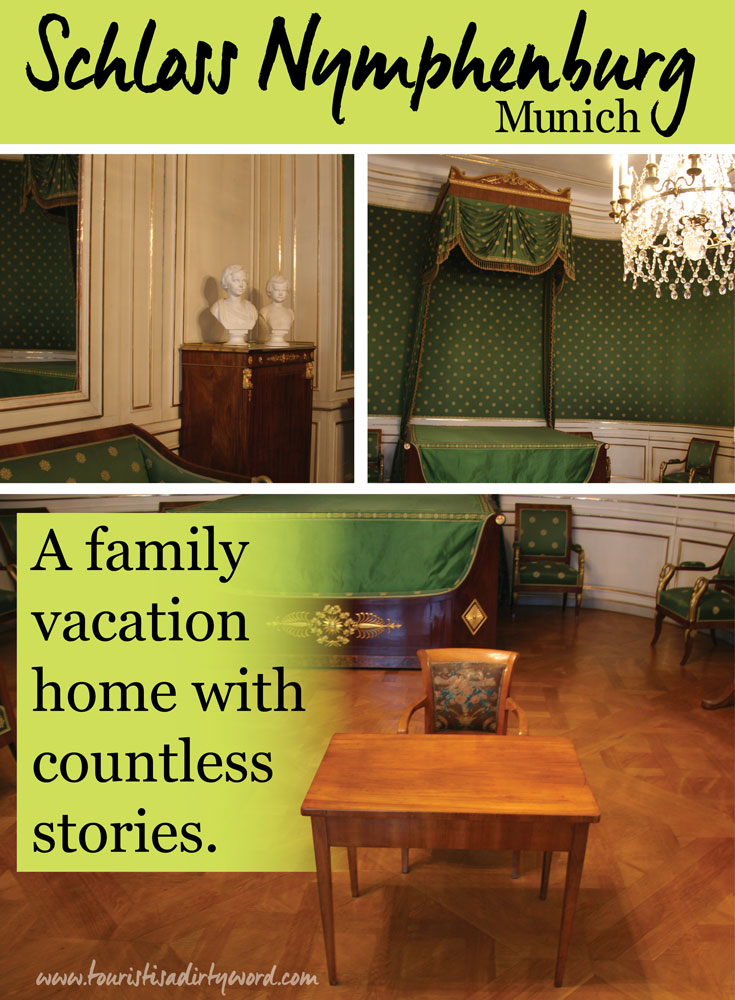
Seeing the tiny, child-size chair and kid's table in the Queen’s room made the palace feel like a home rather than an ongoing museum. That chair and table was once King Ludwig II’s when he was a child. Generation after generation, ultimately this palace, Schloss Nymphenburg, is a family vacation home with many stories to tell.
It was a Sunday morning during Oktoberfest, and we chose to visit Schloss Nymphenburg out of a dizzying array of choices because it felt like it had a little bit of everything; art, history, architecture, and gardens. We had the entire morning to visit the palace and gardens, but to see everything including the pavilion interiors and not be rushed, allow for a full day.
The Great Hall
We entered the Palace through the Great Hall, and the sight of the vaulted ceiling and accompanying gold-gilded stucco work simply took my breath away. When I see such historic, beautiful architecture still existing in person, my eyes tend to water with joy. Yep. I’m that girl, getting all misty-eyed looking at art.
The ceiling was huge, technically two stories since on one side there was a staircase that went up a level to also overlook the hall. I looked at Sebastian, and he knew what was about to happen. I needed to stare at this ceiling, agog in wonder, for a healthy 10 minutes, and take fifty photos or so of various angles before moving on. The stunning ceiling fresco was the work of Johann Baptist Zimmermann, his son Franz Michael, and Martin Heigl between 1755-1757 under Max III Joseph’s rule. The Great Hall has remarkably remained unchanged and preserved as an authentic Rococo room since 1758.

Ten Minutes Later...
We start our way through the wings of the castle, and its immediately ‘choose your own adventure’ as rooms broke off into other rooms and we weren’t sure if we’d end up missing something by accident or going around in circles.
One thing that stood out to me was how often paintings of the palace itself showed up in frames on the wall. It was as if the palace was a family pet that had numerous photos of its antics over the years. The truth is, they needed to constantly paint the palace in order to remember what it looked like. Every generation left their mark on the palace and its design. Many of the furnishings were original or of the time of the palace, often filled with portraits of previous homeowners looking back at you while you’re looking at their belongings and collections.
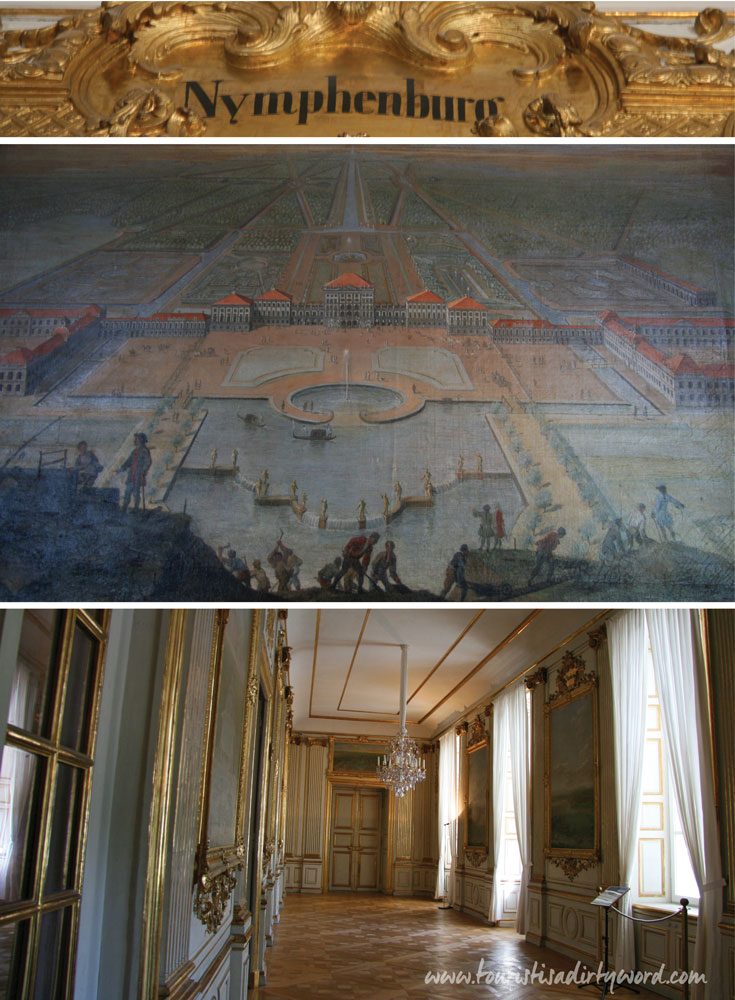

King Ludwig I Gallery of Beauties
When I asked Sebastian what stood out in his memory of the palace, he immediately said the Gallery of Beauties. In the dining room of the Queen’s apartment, the Gallery of Beauties is displayed, a collection of 35 paintings by Joseph Stielier as a commission of King Ludwig I. They were all beautiful ladies, but from all different walks of life, and not necessarily German. The ladies’ wit, personality, and virtue must also be ideal to be included.
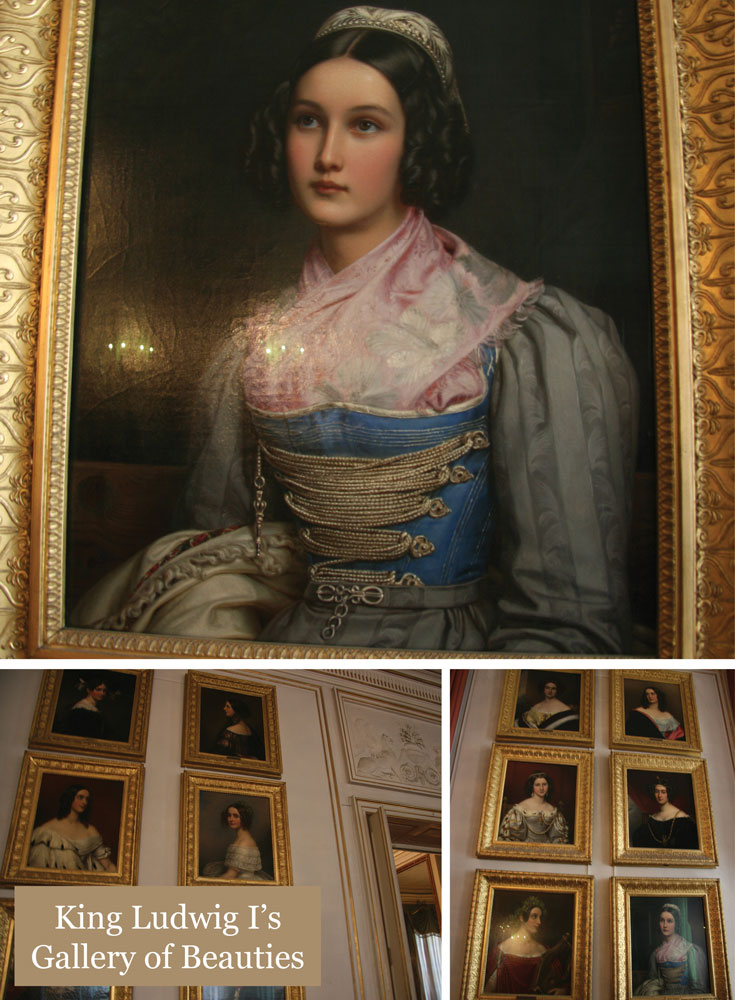
King Ludwig was wholly involved in the project, and out of fourteen ladies nominated by the artist, the King would choose one. His step-mother nominated Elise List, and his wife Therese nominated and convinced Miss Erskine to be a part of the collection. The king would be present during the portrait sittings with Stielier and even direct the outfits. He hand selected and purchased the traditional Bavarian costume for the master shoemaker’s daughter Helene Sedelmayer. Ultimately his friendship with one of his ‘beauties’ would result in his abdication from the throne. If this is interesting for you, I have the perfect book recommendation: King Ludwig I's Gallery of beauties (affiliate link)
It took us several hours to visit all of the accessible rooms in the palace. After concluding our palace visit, we took a leisurely stroll through the park.
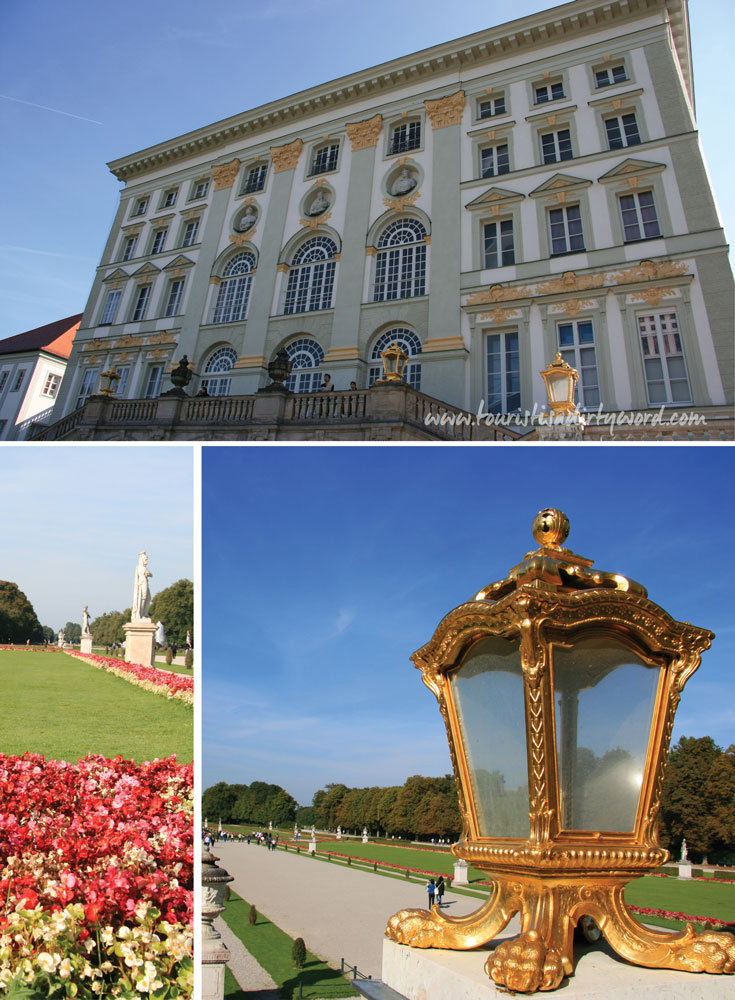
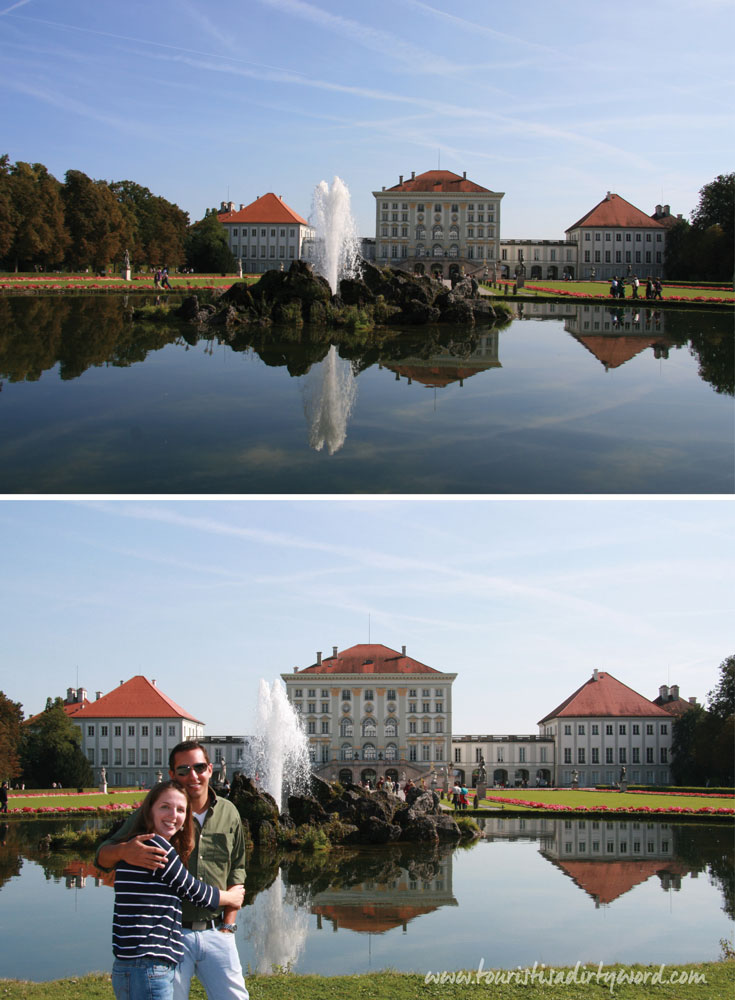
Park Pavilions
Schloss Nymphenburg was the ‘I want to get away from it all’ recluse for the ruler of Bavaria. It was a 2-hour carriage ride from the Munich residence. When you want to escape, reflect, or relax, you’ll need gardens, baths, and sports to unwind with. Over time, the palace grounds provided all of that through numerous pavilions; Amalienburg hunting lodge, the Badenburg bath house, Magdalenenklause for spiritual solace, and Pagodenburg for resting between outdoor games. You’ll need a combination ticket to get inside the pavilions, but to see the outside of them it's part of the public park. We knew we wouldn’t have time to visit inside, but we still wanted to visit the grounds and get an idea how big the park was.
Well, it turns out it's pretty big, and we got lost! Ha! We were trying to hunt down the Monopteros by the lake, and our direct path in our minds turned out to be very roundabout way. We found the Little Village with ‘Green Pump House’ way before we found the picturesque Monopteros. Wear something you can walk comfortably on gravel paths. To explore all of the pavilions you’ll have to walk! To rest up, we had a light lunch Café im Palmenhaus alongside the park before hitting the gift shop for art books on our way out.

Souvenir Recommendations
I chose and whole-heartedly recommend these two:
1. Nymphenburg Palace, Park and Pavilions - Bayerische Schlösserverwaltung. Small but swarthy overview of the building history and room by room descriptions of the objects in each room, including the paintings.
2.King Ludwig I's Gallery of beauties (affiliate link) by Gerhard Hojer which reproduced all 36, including the 1 lost portrait painting, with several essays as well as biographies of each of the ladies. I knew it would have all the details I needed and didn’t have time to read in the exhibit. This book may be best served buying in advance of your trip and reading before you go. The biographies on the ladies’ alone are fascinating.
Follow Along
If you enjoyed this article, or these topics sound interesting to you, you'll love our weekly newsletter. You'll receive a free Germany Packing list for signing up, and you'll receive each week's newest posts every Friday. Thank you for reading!

